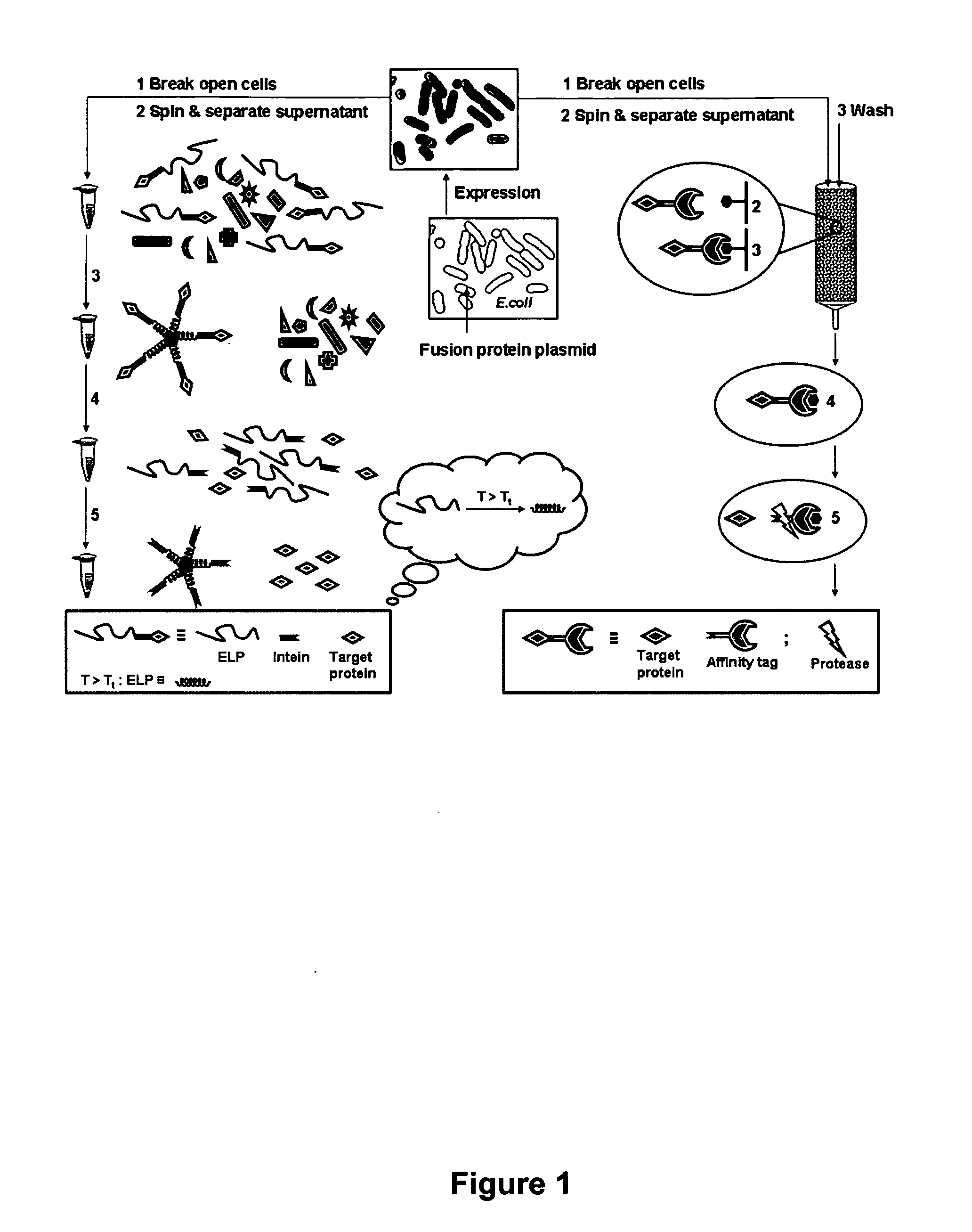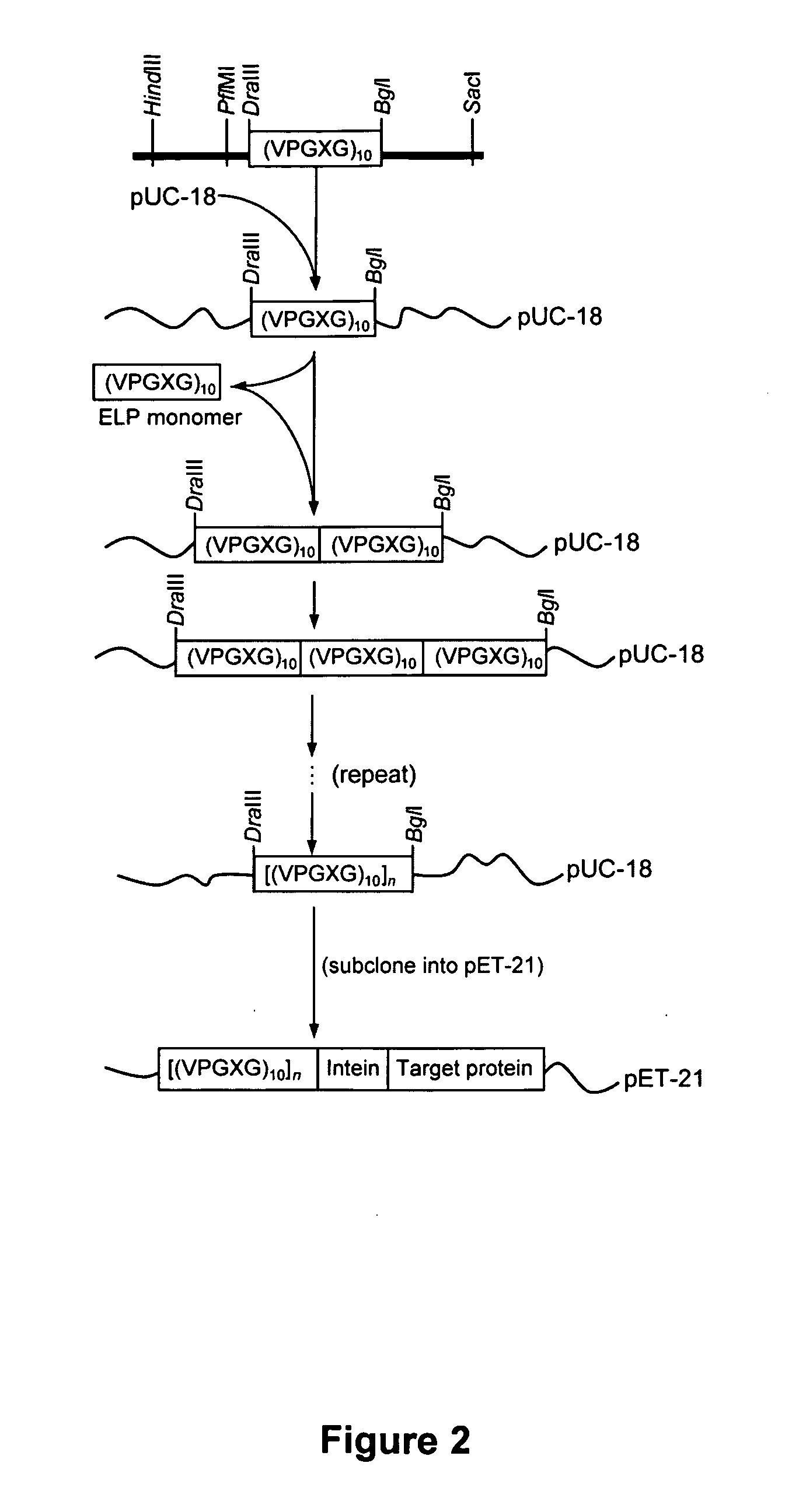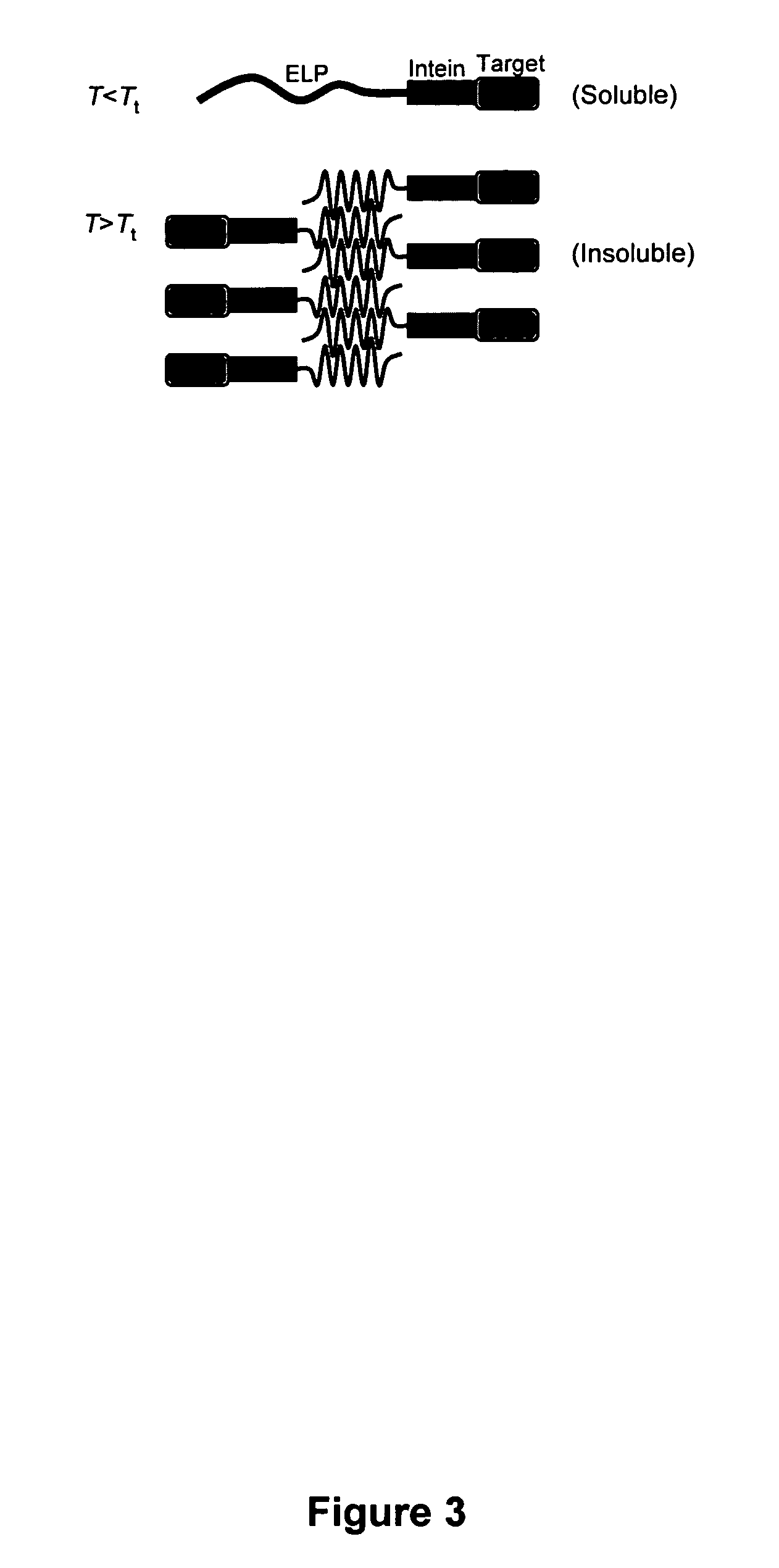Intein-mediated protein purification using in vivo expression of an elastin-like protein
a technology of elastin-like protein and purification method, which is applied in the field of purification of recombinant proteins, can solve the problems of reducing the final yield of the product, and reducing the cost of downstream purification, so as to improve the functionality of the plasmid, reduce the ionic strength of the suspension, and reduce the temperature
- Summary
- Abstract
- Description
- Claims
- Application Information
AI Technical Summary
Benefits of technology
Problems solved by technology
Method used
Image
Examples
example 1
Purification using ELP as Aggregator-Methods
[0070] A general scheme for protein purification using ELP-intein-tagged proteins is shown in FIGS. 1-4. In FIG. 2 is illustrated a library of ELP tags of various lengths generated using recursive cloning in pUC-18. The library is subcloned into pET-21 in fusion to an engineered self-cleaving mini-intein and a number of product proteins expressed in E. coli BLR cells. Details of the methods are presented below. In FIG. 3 is shown that the ELP-intein tag is designed to self-associate into an insoluble core upon heating to a temperature above the ELP transition temperature (Tt). This process results in precipitation of the fusion protein, which is ELP-intein-product protein, also known as ELP-intein-target protein. The intein and the product protein domains remain properly folded. FIG. 4 illustrates the purification of the fusion protein by a series of simple steps, as described in detail below. Briefly, the cells are lysed and the lysate c...
example 2
Protein Purification Using ELP-Intein Fusion Proteins
[0078] The scheme and methods of Example 1 were used to construct a small library of ELPs of varying lengths and insert it into the expression vector pET-21(+) under the control of a T7 promoter. We then used dynamic light scattering to evaluate the ability of each ELP to precipitate efficiently in fusion to the large and highly soluble NusA protein, and determined the approximate Tt for each case. The Tt of a fusion protein depends, in part, on the properties of all the protein components. Ultimately we chose (VPGXG)110 because it fulfilled our design objectives: a moderate transition temperature (below 30° C.) in high salt buffers, efficient precipitation above Tt regardless of the fusion context and a short length. We then used a previously reported cloning strategy to insert other protein sequences immediately following the carboxy-terminal His-Asn dipeptide of the intein in the ELP-intein fusion. This strategy retains the co...
example 3
Purification of Additional Proteins
[0080] Additional product proteins were purified by the method of Example 2 using ELP-intein fusion proteins as the intermediates. The results are shown in FIG. 6, which use the same lane format as discussed for FIG. 5. The product proteins are (a) AHSP, (b) β-lactamase, (c) β-galactosidase, (d) E. coli catalase, (e) green fluorescent protein, (f) glutathione S-transferase, (g) maltose binding protein, (h) Nus A, (i) experimental protein 1 (EX1), (j) experimental protein 2 (EX2), (k) S824 and (l) experimental protein 3 (EX3). The experimental proteins are proteins obtained from collaborators whose structures and functions were not fully known at the time the experiments were performed.
PUM
| Property | Measurement | Unit |
|---|---|---|
| molecular weight | aaaaa | aaaaa |
| temperature | aaaaa | aaaaa |
| pH | aaaaa | aaaaa |
Abstract
Description
Claims
Application Information
 Login to View More
Login to View More - R&D
- Intellectual Property
- Life Sciences
- Materials
- Tech Scout
- Unparalleled Data Quality
- Higher Quality Content
- 60% Fewer Hallucinations
Browse by: Latest US Patents, China's latest patents, Technical Efficacy Thesaurus, Application Domain, Technology Topic, Popular Technical Reports.
© 2025 PatSnap. All rights reserved.Legal|Privacy policy|Modern Slavery Act Transparency Statement|Sitemap|About US| Contact US: help@patsnap.com



